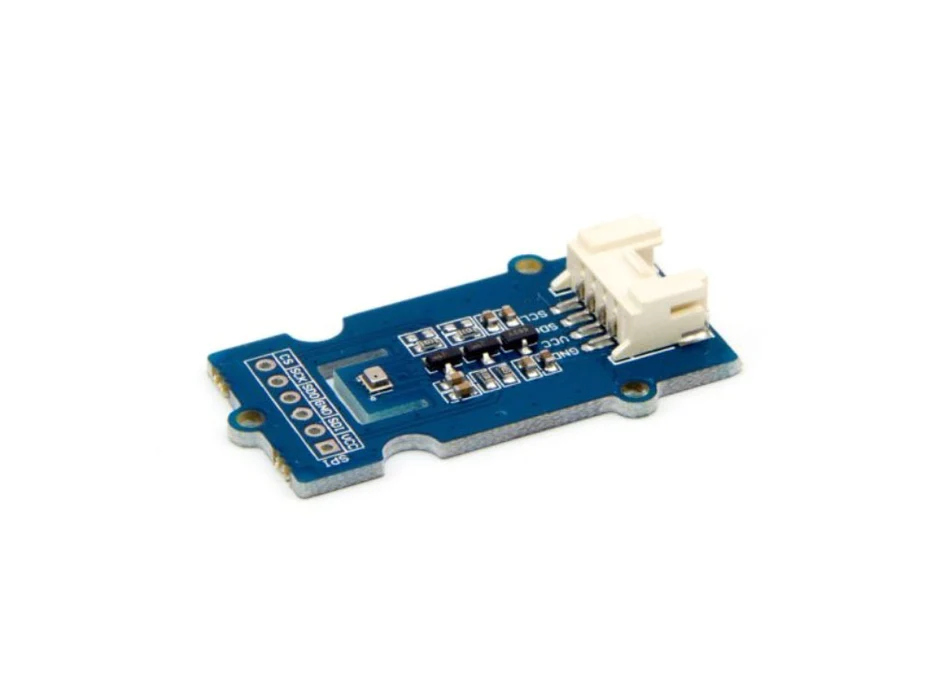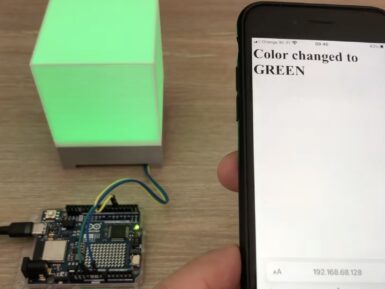
Grove - Barometer Sensor (BMP280)
This Grove - Barometer (High-Accuracy) Sensor features a HP206C high-accuracy chip to detect barometric pressure, Altimeter and temperature.
Overview
It can widely measure pressure ranging from 300 mbar to 1200 mbar, with a super high accuracy of 0.01mbar(0.1m) in ultra-high resolution mode.
The chip only accepts 1.8V to 3.6V input voltage. However, with the outer circuit on the pcb added, this module becomes compatible with 3.3V and 5V. Therefore, it can be used with an Arduino. It is designed to be connected directly to a microcontroller via the I2C bus.
Features
- Digital two wire (I2C) interface
- Command-based Reading, Compensated (Optional)
- Programmable Events and Interrupt Controls
- Full Data Compensation
- Wide barometric pressure range
- Flexible supply voltage range
- Ultra-low power consumption
- Altitude Resolution down to 0.01 meter
- Temperature measurement included
Get Inspired

Syntaxx is powered by three Arduino boards, each handling specific functions to create a seamless and dynamic performance:

It can be tough to get started with building an Internet of Things (IoT) project from the ground-up, as getting connected, serving a webpage, and managing other devices can all be a challenge to a beginner. This is why the YouTuber known as “Mario’s Ideas” made an end-to-end tutorial that details everything one might need to build a smart RGB lamp. Because the Arduino UNO R4 WiFi contains an ESP32-S3 chip for its Wi-Fi radio and Renesas RA4M1 microcontroller, it was the perfect candidate. Mario’s sketch begins with a call to initialize the Wi-Fi module before attempting to connect to his local access point. Once finished, it enters a loop that continuously checks if a client has connected to the web server, and if one has, reads the requested path while also seeing if the string contains “/H” to denote an “ON” command to set the LED. Toggling an LED is useful, but Mario wanted to take things a step further by building a tangible — in this case a lamp. His 3D-printed enclosure features a recessed base and translucent cube for diffusing the light emitted by a grid of NeoPixels. Controlling the color was just as easy since any browser could still send a request path containing a color and get back the lamp’s updated status. To see more about this IoT lamp project, you can watch Mario’s video below!







